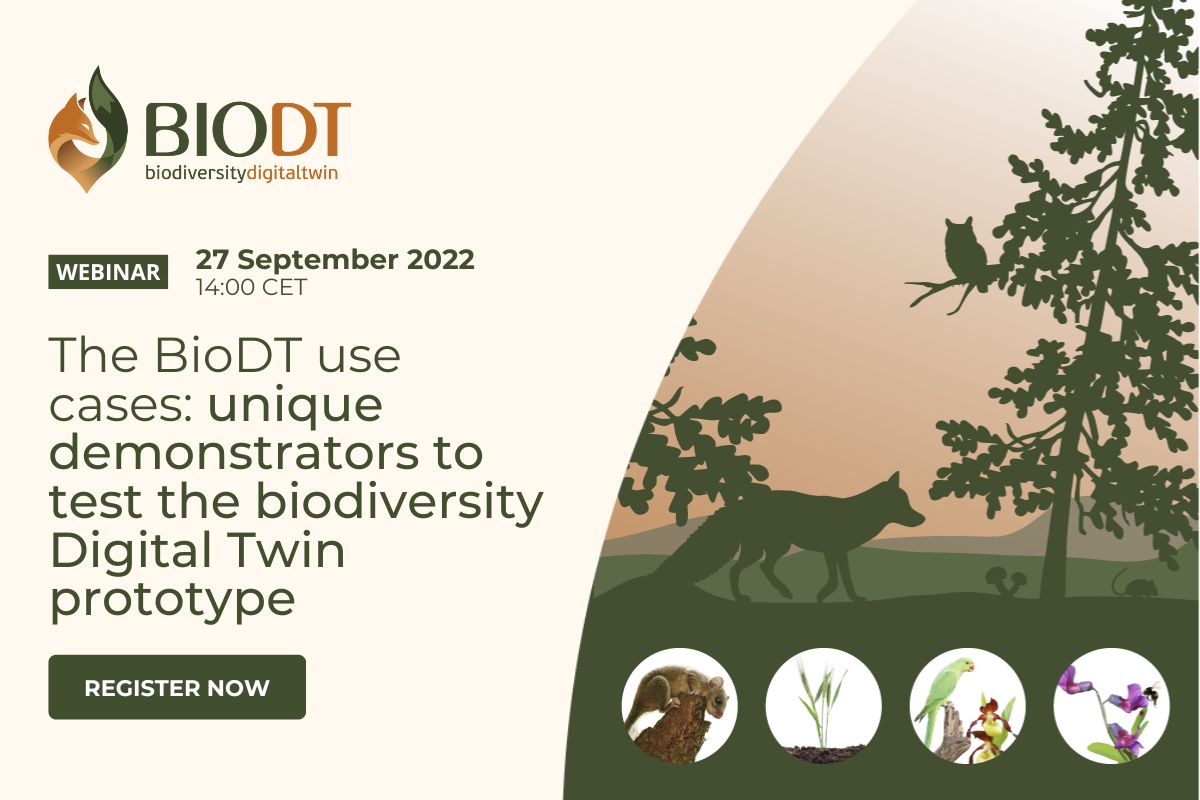
The BioDT project aims to develop the biodiversity BioDT prototype to help better predict global biodiversity dynamics and how species interact with their environment and with each other.
In order to test the work the project team is bringing forward, the BioDT team will develop over the course of three years, groups of use cases that showcase how BioDT can examine its predictive performance and address biodiversity challenges through scenario simulations, predictions and biomonitoring methods.
The four use cases groups that BioDT is developing focus on:
- Species response to environmental change, which puts attention on biodiversity dynamics and ecosystems services;
- Genetically detected biodiversity, that aims to bring research forward for crop wild relatives and genetic resources for food security and DNA detected biodiversity, poorly known habitats;
- Dynamics and threats from and for species of policy concern, that explores invasive species and endangered species;
- Species interactions with each other and with humans, that studies disease outbreaks and pollinators.
About the webinar
During the 1-hour webinar, the attendees can learn more about the scope, challenges, solutions and benefits brought by the BioDT use cases and how their development can help scientists in predicting future trends in the biodiversity field.
The online event provides also the opportunity to meet the developers of the use cases and interact with them during interactive and Q&A sessions.
Agenda
Part 1 - Introduction
- 14:00 - 14:05: Welcome and interactive session, Rita Giuffrida, Trust-IT Services
- 14:05 - 14:10: The BioDT use cases: a short introduction - Dmitry Schigel, BioDT Use Cases Co-leader and Scientific officer at GBIF and Dag Endresen, BioDT Use Cases Co-leader and GBIF Node Manager for Norway
Part 2 - Use case presentations
- 14:10 - 14:20: Group 2: Genetically detected biodiversity - Desalegn Chala Gelete, Post-doc researcher at Universitet i Oslo - download the slides
- 14:20 - 14:30: Group 3: Dynamics and threats from and for species of policy concern - Ingolf Kühn, Professor at Helmholtz Centre for Environmental Research - download the slides
- 14:30 - 14:40: Group 4: Species interactions with each other and with humans - Marcella Orwick Rydmark, Research Coordinator at Universitet i Oslo - download the slides
Part 3 - Wrap-up and closure
- 14:40 - 15:00: Interactive session with the audience and Q&A
- 15:00 - Wrap-up and closure, Dmitry Schigel, BioDT Use Cases Co-leader and Scientific officer at GBIF